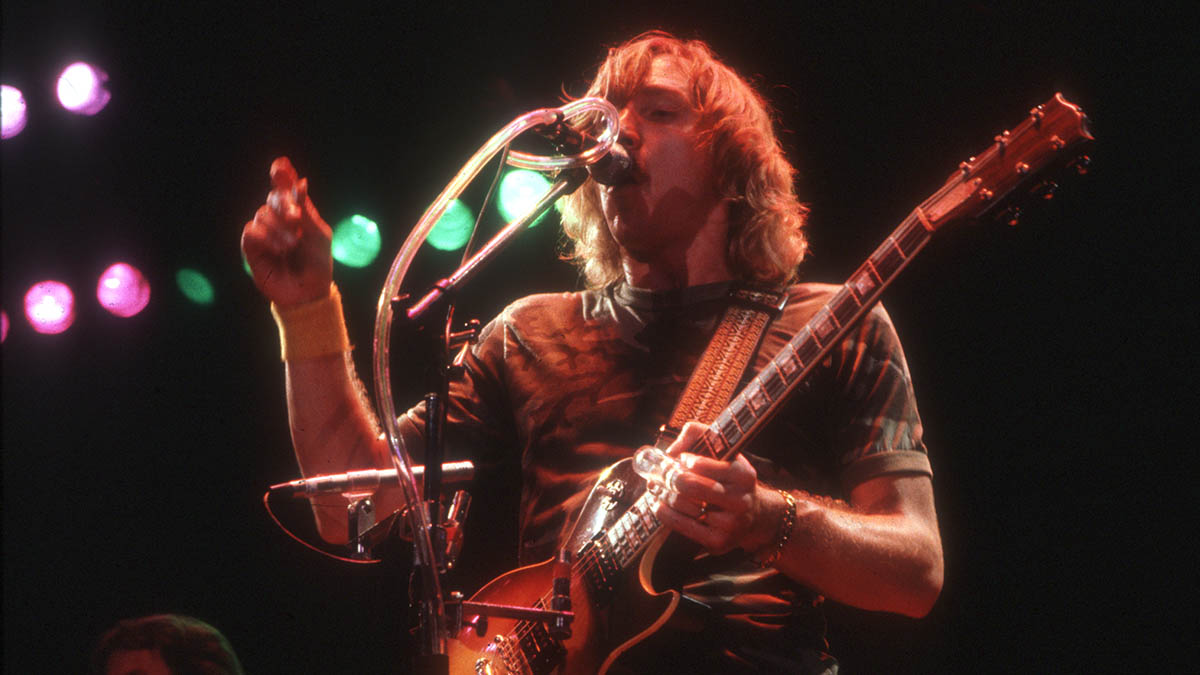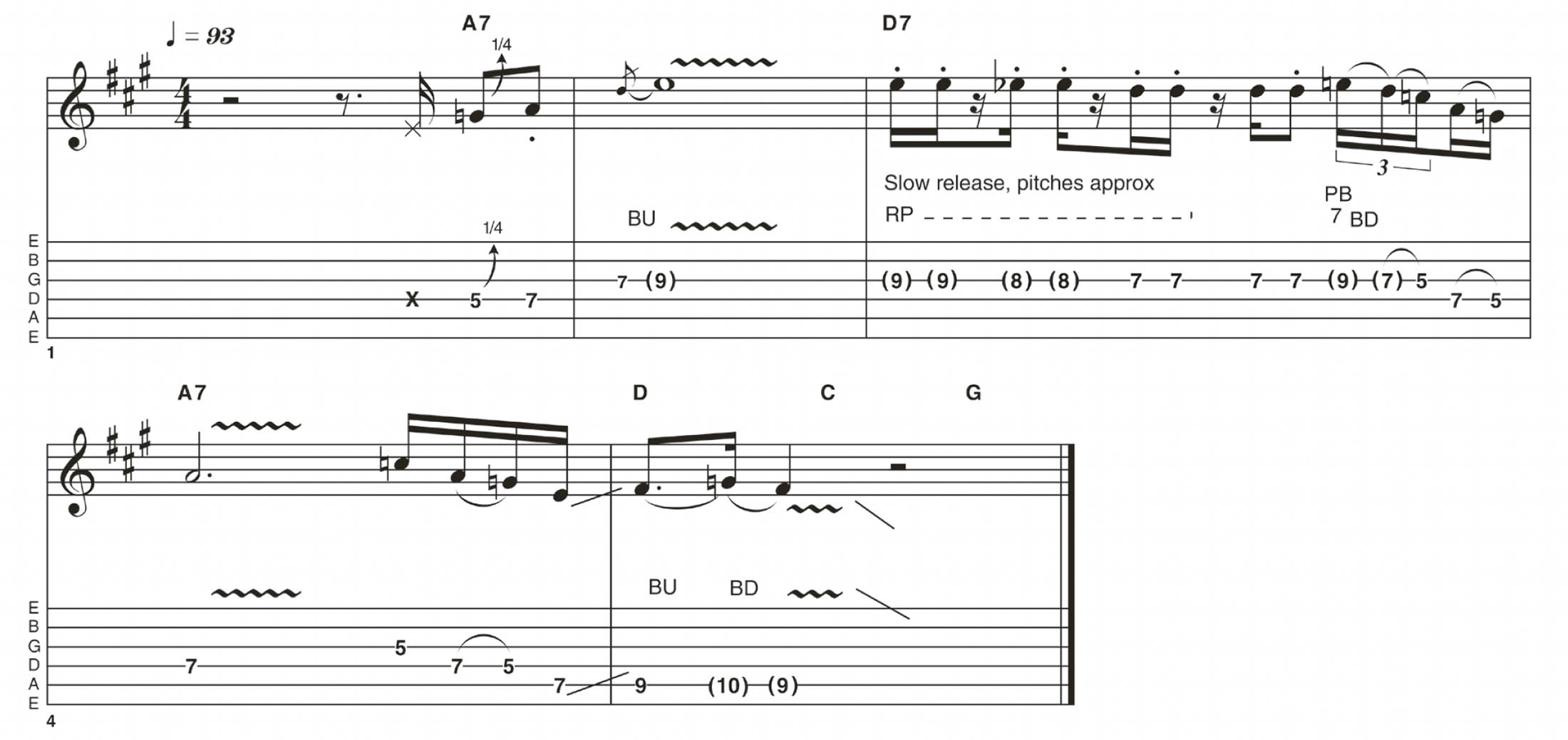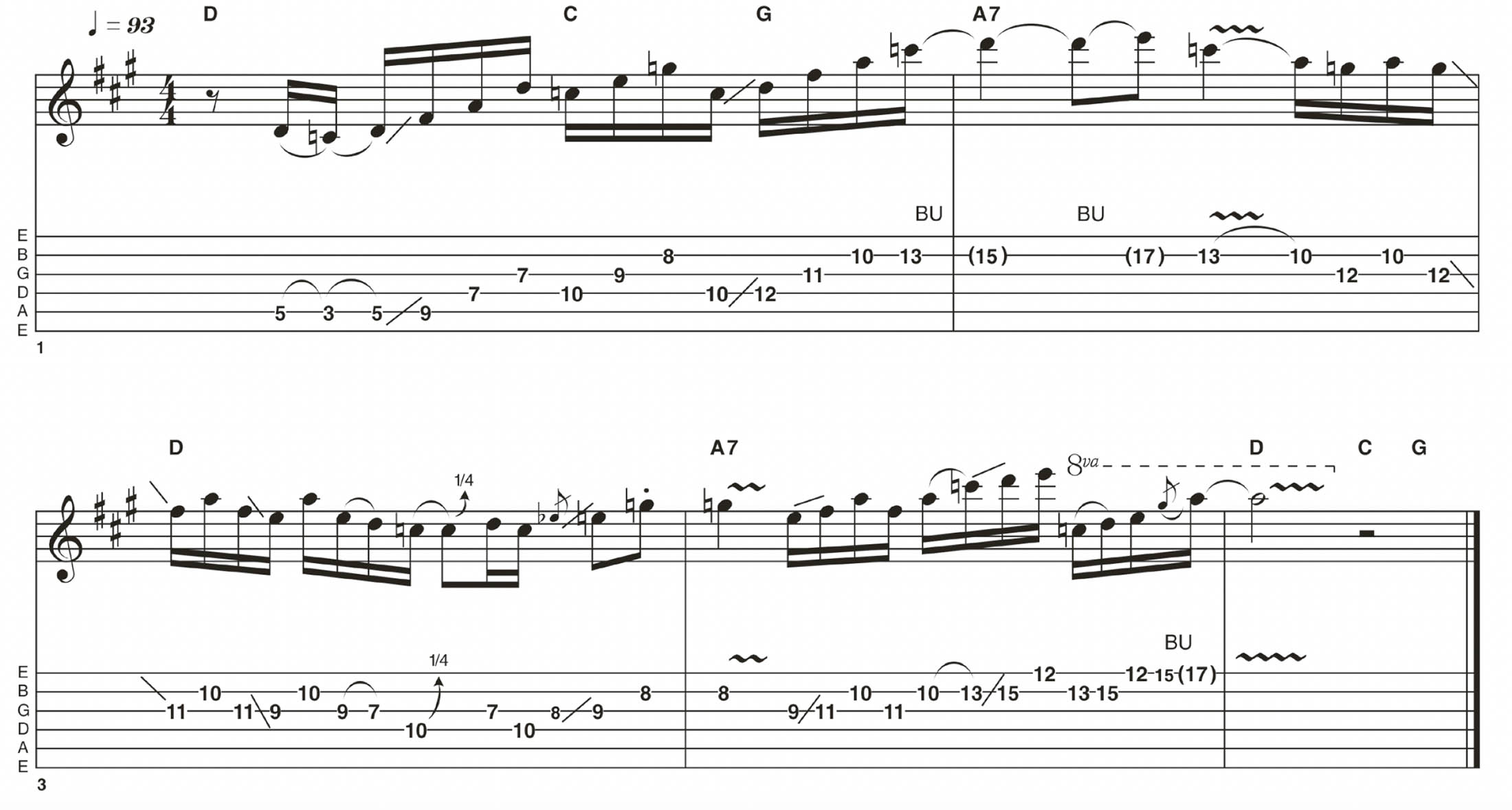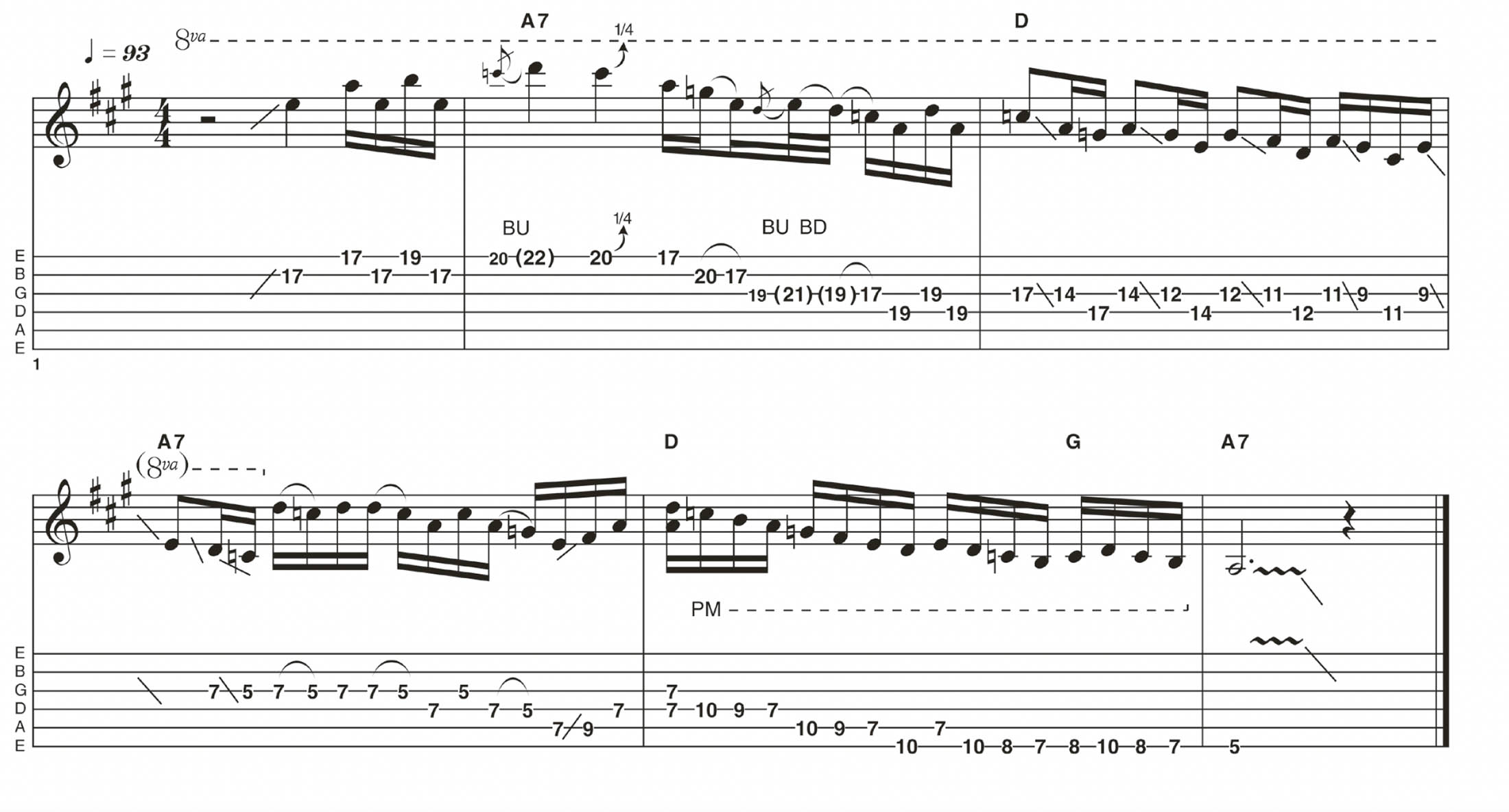Funk up your blues with these Joe Walsh-style solo ideas
Four ways to supply fiery blues-rock leads over a two-chord vamp in the style of Walsh, Joe Bonamassa and Gary Moore

For this lesson, I’ve gone with what is essentially a two-chord vamp (A7 and D), taking a blues-rock approach with nods to Joe Bonamassa, Gary Moore and a little bit of Joe Walsh.
It is unashamedly pentatonic, with a few b5s to make it technically the ‘blues scale’ – plus a couple of brief triads and descending A Dorian run at the end.
That said, I was not thinking in those terms as I played. The pentatonic and CAGED shapes exist within the same spaces on the fretboard, and, if you link the positions together, it’s easy to find yourself playing a linear scale pattern like that last one. (Initially, I had felt this unimaginative and was going to go for another take, but then realised it’s quite a good demo of that last point…)
Aside from the notes/patterns used, a major consideration is the rhythm. It would be perfectly possible to play an interesting line with just one or two notes – for a while, at least. Perhaps the boldest rhythmic contrast here is the use of short staccato passages and longer sustained notes side by side, though things do get a little more ‘70s cop show’ in Example 2!
It isn’t really until halfway through the solo that I start making use of the drive and sustain available with this kind of tone, with some held high notes/vibrato. You might want to consider what sort of vibrato works for you best: fast Paul Kossoff, introduced selectively like Gary Moore, or wide and aggressive like Zakk Wylde. The best way to assess these aspects of your own playing is to record and listen back. Enjoy!
Example 1

Initially, I was thinking here of Joe Walsh at the beginning of Funk #49. This is classic shape 1 A minor pentatonic, which fits okay over the A7 as long as you don’t labour the C natural or bend it slightly sharp.
At bar 4, I change position for the D major chord. Though I’m not playing the whole chord here, it is the lower part of the shape Hendrix uses in Wind Cries Mary. This happens again later, so don’t worry if it isn’t obvious.
Example 2

Back to the shape 1 A minor pentatonic for some doublestops and staccato rhythms, sliding down to the adjacent shape 5 at the 3rd/5th frets. You may notice the chromatic slide in bar 3.
To be honest, this wasn’t really intentional, but that’s how it’s come out so that’s what I’ve transcribed! Be sure to exaggerate/emphasise the staccato phrases for the full effect – and lose a little gain if necessary.
Example 3

Once you internalise the patterns, this kind of position shift isn’t difficult. Starting from the shape 5 mentioned in Example 2, a bold slide up to the 9th fret leads to a restatement of the Jimi-style D chord I mentioned earlier.
Knowing there is a brief C chord here, I’ve grabbed a nearby C major triad then, in the heat of the moment, a D major as a passing thing. From here, it’s back to pentatonic with a series of slides and doublestops, for which you’ll need to organise your fingers carefully.
Example 4

A brief excursion to the highest register before using the third and fourth strings to shift all the way back to where we started: the shape 1 A minor pentatonic. However, we don’t stay there long, either.
The palm-muted A Dorian run might not be the most melodic choice, but it does demonstrate another option at your disposal. This would also run neatly back into chord accompaniment in a band context.
Hear it here
James Gang – James Gang Rides Again
This 1970 classic from James Gang kicks off with Funk #49, from which I briefly borrow the repicked bend for the beginning of my own solo. It’s also well worth checking out Joe Walsh’s funky blues-rock riffing and solo phrasing on tracks such as Asshton Park, Woman and Thanks.
Pay particular attention to the way certain chord inversions can integrate into the pentatonic‑based riffs and phrases; there are very few ‘straight’ powerchords to be found.
Joe Bonamassa – Dust Bowl
Joe has always straddled the gap between British Invasion-style blues, and classic and modern rock. Check out the title track for blues with a soul/funk tinge, plus some atmospheric textures.
Elsewhere, try You Better Watch Yourself for a more traditional blues shuffle – though, as ever, with lots of useful ideas worth lifting! Finally, check out The Whale That Swallowed Jonah to hear how Joe brings a blues sensibility to a less obviously ‘blues-based’ chord progression.
Gary Moore – Blues and Beyond
Gary Moore’s combination of rip-roaring technique and melodic awareness is unmatched, even in his ’70s/fusion days, which saw him integrate jazz lines into his repertoire with the same flair.
There’s so much to enjoy in this collection: check out his fiery phrasing on Stormy Monday, some more soulful lines on That’s Why I Play the Blues, and, finally, hear him bring a Jeff Beck vibe to The Prophet.
Get The Pick Newsletter
All the latest guitar news, interviews, lessons, reviews, deals and more, direct to your inbox!
As well as a longtime contributor to Guitarist and Guitar Techniques, Richard is Tony Hadley’s longstanding guitarist, and has worked with everyone from Roger Daltrey to Ronan Keating.










![Joe Bonamassa [left] wears a deep blue suit and polka-dotted shirt and plays his green refin Strat; the late Irish blues legend Rory Gallagher [right] screams and inflicts some punishment on his heavily worn number one Stratocaster.](https://cdn.mos.cms.futurecdn.net/cw28h7UBcTVfTLs7p7eiLe.jpg)
